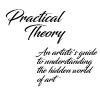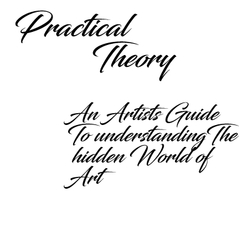Sign In
ClosePractical Theory The five basic phases by kemonocross

Practical Theory. The five basic phases, the development of the Schema, and the use of basic representation.
When we are first learning how to draw, there is an essential question that must be held firmly in our minds as we move the pencil across the paper in front of us. For the sake of simplicity I'm going to be referring to methods that rely on the use of analogue mediums rather then digital ones because learning to work digitally involves developing a much more advanced set of skills then simply setting out to draw on blank sheet of paper. So with that said, the question is this, in terms of visual and spatial recognition, what is it that is happening when a line crosses from two-dimensional space, to three-dimensional space? Now, I'll give you a moment to think about this as not only is it a trick question it involves being able observe this particular phenomena in action so if you want to see it for yourself draw a small circle on a blank sheet of paper, bisect it with a line, and then look at it from above.
If you can see that the line is now curved, then congratulations, you folded the paper in half didn't you?
Okay but seriously, how far away is it?
If you said only as close as the surface of the paper, then why am I even explaining this to you?
Alright, I've had my fun, I'll explain what's actually happening now. Because the mind relies on recieving visual cues from the eyes while drawing in order make sense of what an image is actually supposed to be, there is moment of cognitive delay as we attempt to reason out the form, function, and purpose of the object in question in order to affix its associated value in our minds. Recognition typically happens some time after this. But its important to remember that what we are seeing, is not necessarily the same thing as what we're imagining. Or projecting for that matter. This phenomena can of course be seen evidenced by the painting by Rene Magritte, The Treachery of Images, which also contains the words, this is not a pipe, despite being what is in fact a painting of a pipe.
Now in order to understand what's going on we first have to know what a pipe is and what its used for, otherwise the contextual narrative will create a completely different experience and my example won't work at all. But what the point I'm trying to make is, knowing that a painting of a pipe is not in fact a pipe, can you go back to the moment when you first believed that it was?
The curse of knowledge says no, but with optical illusions such as the devil's pitchfork the answer is, yes. If only because we can reorient our perspective and effectively flip between the two illusions that are superimposed on top of one another. And its that exact moment when the switch is made that is so essential for us to learn to recognize because its usually the first thing that serves as an indication that we've done something right.
As proof of this, when we first set out to draw, the eye will always lie to us because we instinctively try to draw what we're seeing on the page rather then what we we're seeing in our minds, which can only be overcome through training and leads to all manner of interesting problems that involve the resolution of the schema, but I'll get back to that in a minute.
Now, the five basic phases are as follows. Line becomes shape, shape becomes object, object becomes form, and form becomes figure when we add in composition, and not only does each step in the process change the physical properties of how a line expresses itself, but the visible behaviour of that line as well. Or to put it in terms of physics, a line has weight, a shape has volume, an object has mass, and a form has dimensions. Gesture is what gives figures their definitions while two objects placed on different visual planes creates the illusion of space because it causes them to form a relationship.
And if you want to see this principle in action, start off by drawing a straight line on a blank sheet of paper. While the paper is blank, it will simply absorb your field of vision, but once we add a line, that line becomes the focal point that draws our attention. But if we then add three more lines to create a square, the shape takes on a sense of space that is seperate and distinct from the area which surrounds it. And while the space within that square contains all of the attributes and properties we associate with volume, if we then extend those same lines along an angle that is moving away from their original points in order to create a cube, because the object now contains both weight and volume, it gains the properties and attributes of mass. And of course if we were to add in tonal values and shading, we would then have our composition.
And if you think that was a fun one to try and wrap your head around remember, while distance in a work of art is merely a suggestion, albeit a rather convincing one, space is nothing more then an illusion. They exist because we expect them to exist, and because life has conditioned us to think in specific ways artists are able to take advantage of the physical properties and behaviours that are being expressed through the use of line in order to create truly convincing images. Also an artist can only move their hand along the vertical and horizontal visual planes, so the ability to create that sense of depth and distance is not only a matter of perspective, its about being able to focus our awareness on a point that is somewhere within the depths of the image itself, even though the tip of our pencil is pressed gently against the surface of the paper.
I've said it before and I'll say it again, being able to draw involves resolving a variety of different paradoxes and very rarely is it ever as straightforward as first you draw a circle, put a line through it, then add in the eyes, the nose, and boom, you have the beginnings of a face.
Yeah, no, faces are particularly challenging for beginners precisely because they move through all five phases in such rapid succession. Hell just learning to recognize all of the visual cues while maintaining a consistent pressure on the pencil without dragging it so that the tooth of the paper catches the tip requires us to be able to concentrate on several things at the same time. Or as I used to tell people, learning how to draw is like trying to juggle while riding a unicycle blindfolded. If you do it well, everyone is amazed by the trick, do it badly, and you end up looking like an idiot.
But wait, what about the development of the schema? Well, that's what I've been trying to illustrate all along, you see in psychological terms Schema are the mental structure we utilize in order to organize and percieve new information, and the five basic phases, well they're a memnomic device that helps us to recognize and categorize the behaviours of line. In fact a lot of the characteristics of art fall into recognizable patterns that we can then use heuristic techniques to understand in order to build up an internal system of reference that supports us while we draw. Hint, they're called Executive Order Decision Making Skills. Now as for how for how basic representation works, when we attempt to visualize the placement of objects, lines often serve as a stand in for the image that will eventually take their place. This is because once the information density in an image has increased beyond a certain point, it puts pressure on our cognitive load, and depending on how far along in our development we are as artists, there's only so much of a mental burden that we can carry before the mental scaffolding collapes on top of us. Yeah, that feeling of frustration you experience when something doesn't work the way you were expecting it to, there's a whole host of things going on in our brains when that happens, but for those who are just starting out reducing the complexity of the images using basic representation allows us to work in stages which then allows us to extract ourselves from the image safely.
Well that wraps up just about everything I have to say for this post, but don't worry, as time goes on things will get a lot more complicated and I'll be able to go into a lot more detail about specific phenomena. This is just supposed to be a taste after all. Ciao.
Practical Theory, an artist's guide to understanding the hidden world of art, is a blog in which I'll be discussing all the weird, strange and semi-mystical things I've encountered while researching the emergent principles inherent in the transdisciplinary nature of art. So if you've ever wondered why art works the way it does, or if your just a fan of seeing if words can be weaponized in a way that can make people's head explode, check it out!
Submission Information
- Views:
- 468
- Comments:
- 0
- Favorites:
- 0
- Rating:
- General
- Category:
- Literary / Other



